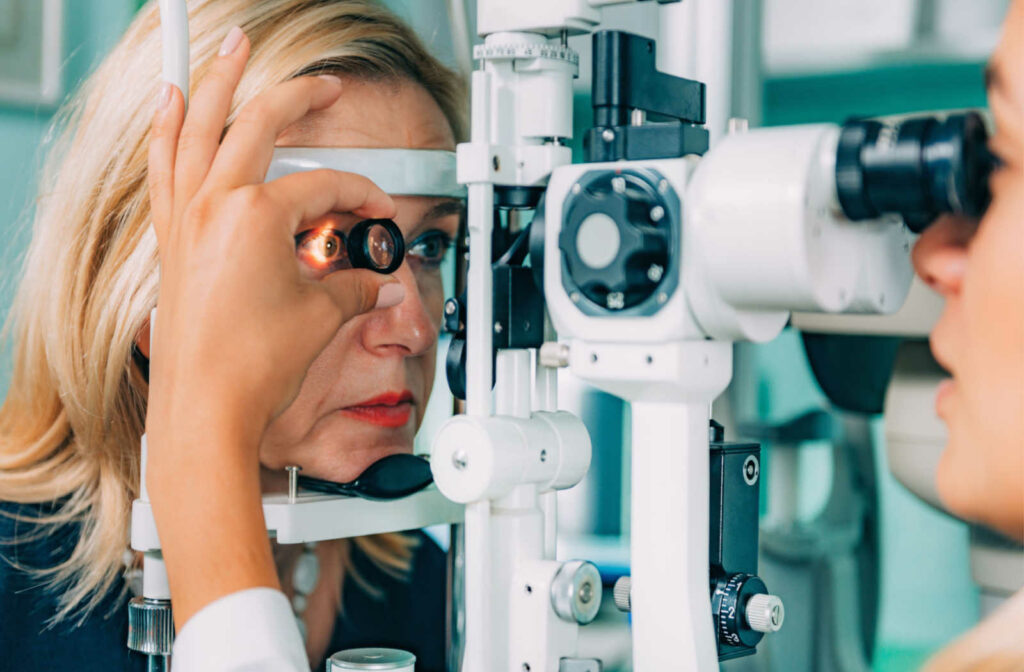Comprehensive eye examinations aren’t just about updating your glasses or contact lens prescription. Eye exams can help your optometrist determine other important aspects of your overall health.
Let’s look at what your eyes can tell you about your health, including other conditions that can be diagnosed through an eye exam.
Preserving Your Health
The primary function of eye exams in a lot of patient’s eyes is to diagnose and correct refractive errors such as:
Your optometrist can update your prescription and find the right glasses or contact lenses for your unique visual needs.
Your eyes are a window to the rest of your body and can reveal more about your overall health than you know. As you age, you may develop eye diseases and conditions such as:
Some of these diseases can begin with little to no symptoms in their early stages. A comprehensive eye examination can help your optometrist diagnose early signs of early disease and prepare a management plan.
A comprehensive eye exam includes a complete check-up of the external parts of your eyes, including the eyelids, cornea, iris, and lens. Your eye exam will also include an internal check-up using diagnostic technology to check for developing eye disease issues.

A Window to Your Overall Health
Eye exams are about more than your vision. Regular eye exams can serve as a form of early detection and treatment for other serious health conditions. Problems in your eyes can sometimes signify signs of disease in other parts of your body.
Early detection is essential when it comes to diagnosing and managing any disease, whether it’s related to your vision or not. These are just some of the different conditions that can be detected through a comprehensive eye examination.
Diabetes
Tiny blood vessels that leak yellow fluid or blood in the retina can be a sign of diabetic retinopathy. This disease can sometimes appear before a patient has been diagnosed with diabetes.
Early detection can assist with treatment options and help avoid vision loss.
Heart Disease
When the retina is carefully examined using an imaging tool called optical coherence tomography, microscopic marks left behind by an eye stroke may be detected. These marks can also appear in healthy people but are found in higher numbers in people with heart disease.
High Blood Pressure
Irregular bends or bleeding from the blood vessels in the back of the eye can indicate high blood pressure.
High blood pressure is a risk factor in the onset and progression of glaucoma, diabetic retinopathy, and macular degeneration.
High Cholesterol
A yellow or blue ring around the cornea can be a sign of high cholesterol. Deposits in the blood vessels of the retina can also be an indication of higher cholesterol.
Vitamin A Deficiency
Dry eyes and difficulty seeing at night are signs of Vitamin A deficiency. A lack of vitamin A prevents your eyes from producing enough moisture to keep them lubricated.
Vitamin A deficiency is the leading cause of preventable blindness in children around the world.
It’s essential to remember that these symptoms do not guarantee a certain health condition but can serve as an indication to get a complete health check-up.
Consistent Eye Exams
Consistent eye exams provide a window to your overall health in many cases. Your eyes can signify the development of diseases elsewhere in your body. They can allow you to get an early start on management and treatment. Book an appointment with your optometrist at Los Angeles EyeCare Optometry Group and learn more about what your eyes can tell you about your overall health.



